
Rabbits, Another White Meat
by Rachel Heaton, Hardly Simple Farming
January 8, 2021
My foray into meat rabbits came through an interest in meat chickens. “Why not rabbits?” is what I was met with when I said I wanted to get a few heritage birds for eating. I’d never considered eating raised rabbits. I didn’t even know that was a thing. So I started doing a little reading in a book from Tractor Supply, which led to finding a breeder listed on a website and my first rabbit purchase of a Californian doe (female rabbit) and New Zealand buck (male rabbit). (Californian and New Zealand are breeds of rabbits.) They were older and he wasn’t the best genetically, but me in my naivete thought rabbits were just rabbits. I had no idea the rabbit hole (pun intended) I was about to fall into when it came to learning about different breed growth rates and feed conversions, not to mention the endless color possibilities and genetics I have found myself fascinated by lately.
Most of us know something about rabbits. “We had one as a pet when I was a kid,” or “My grandparents kept them” are two statements I hear a lot when people find out that I have rabbits. I also hear a lot of “they multiply like rabbits” jokes, but rarely does anyone share stories about raising rabbits for meat or their family’s favorite rabbit recipes. Rabbits are most often viewed as pets, and some people are aghast to imagine me harvesting these creatures. But normalizing rabbit as another white meat is a goal for me and I am undeterred.
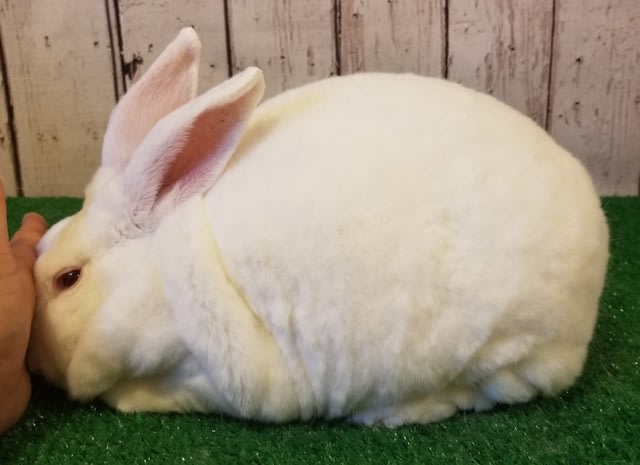
In our state of Alabama, rabbits are not technically considered livestock although some homeowners’ associations disagree. Rabbits are quiet and generally not as smelly as some animals and can be kept relatively easily in a backyard setup for a family’s use. Rabbits generate a cold manure that can be used directly into your garden or flower bed soil. This rabbit “dirt-not-dirt” is all that my raised garden beds consist of. I have even sold “bunny berries” as fertilizer a few times. Rabbits don’t require as much attention as some animals like dogs or cats, and the time spent can be as little as five minutes to feed and water when you’re in a rush or you can stay and play all day doing various rabbit-related chores. If you like to garden your own vegetables or keep chickens for eggs, then raising meat rabbits should be an easy next step for you.
The most popular meat breeds are Californians and New Zealands since they have such fast growth rates. They typically reach five pounds by eight weeks old, but they have ruby-hued eyes that can be off-putting to some people. Rex are the third most popular meat breed since they are a little slower growing and take about a month longer to harvest than Californians and New Zealands. They have brown eyes and their plush coats come in a wide variety of colors and patterns. Rex coats are very short, and the hairs stand up off the body in a way that feels like velvet or velour. Their fur is even used for some items. The first time I ever touched a Rex I was hooked and immediately started making plans to switch my herd over to the breed.
I keep my rabbits in individual wire cages off the ground inside a barn. Since there is no contact with dirt, the chances of the rabbits getting worms is greatly decreased and the use of deworming medications is not necessary (which appeals to my inclinations of trying to be as natural and organic as possible). Wire cages also help keep the rabbits cleaner because they are not in contact with their wastes and ventilation during the summer heat is easier. Wearing fur coats, the rabbits enjoy cold temperatures and additional heating is not necessary.
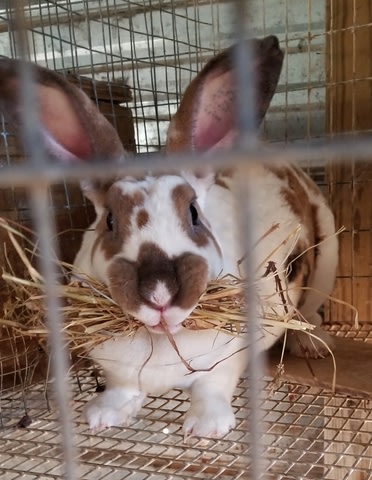
I feed my rabbits pellets from the local co-op because they are the highest protein I can find in my area and terribly convenient. There are rabbit raisers that do not feed pellets and spend their days foraging the lawn and fields for their rabbits, but I haven’t gotten into that yet. I measure the feed for every rabbit. Rabbits do not build fat inside muscle like cows, so the meat is very lean. However, the fat gathers around their internal organs and can restrict their breed capabilities. Mothers with kits and growouts get almost unlimited portions twice daily. I also feed hay and pinecones for fiber and chewing satisfaction.
“Breeding like rabbits” doesn’t exactly apply when raising domestic rabbits as opposed to them being in the wild. Rabbits don’t go into a heat or estrus cycle but are reproductively open every day. You can use this to your advantage when timing the birth of kits around available cage space or needing many rabbits the same size and age at the same time such as for 4-H projects several months away. That’s the easy part. It gets more difficult when the rabbit is overweight, the doe doesn’t like the buck you have chosen for her, or the buck is temporarily heat sterile in the summer. Does are territorial of their space so she must go to the buck’s cage when pairing rabbits for breeding, and then be put back into her own cage afterwards. After a successful mating, kits are usually born 28-32 days later and the real fun begins!
Baby rabbits, or kits, are born hairless so the nest their mother constructs out of hay and her own fur is vital to their survival, even during the warmer months. Rabbit milk is rich and nutritious, and the tiny hippopotamus-looking creatures grow incredibly fast on it. After about ten days their blind eyes open, and they start to bumble out of the nest. Their clumsy tumbling is so cute, and their little fat faces are irresistible to anyone that likes baby animals.
A common misconception is that if you touch the babies the mother won’t come back. In my experience I have not observed that to be true. Your rabbits should be comfortable with your presence and trust you. Particularly nervous does can be distracted with treats like bits of bananas or petted for reassurance. Rabbits do not sit on their babies like chickens and only visit the nest twice a day to feed the kits. The kits need to be counted twice a day for the first week to make sure there are none missing since they can sometimes hang on to their mother too tightly and be drug out of the nest
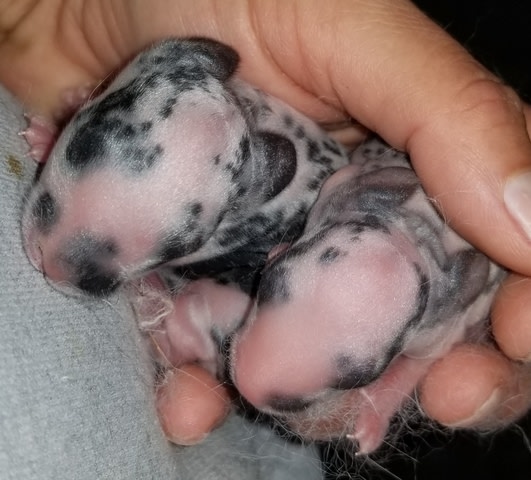
Determining the gender of the kits can be a real challenge. Having someone show you what to look for and how to do it yourself is incredibly helpful, but practice makes perfect. Eventually your eyes get used to knowing what to look for and you will be more accurate at younger ages. Expect mistakes! When I first started, I couldn’t tell a junior buck from a junior doe at 3 months old, but now I’m about 95 percent accurate at three weeks old.
Kits start eating pellets at about three weeks old, and I usually start weaning at five weeks so they have a week of adjustment before possibly moving on to their new homes at six weeks. Kits can be left with their mothers for longer, but they are getting bigger and rowdier and mama just wants some peace!
Rabbits are crepuscular, meaning they are most active during the dusk and dawn hours and are perfectly happy sitting in one spot during the daytime taking naps and doing their heavy thinking. During the hot summertime when it cools off in the afternoon right before dark the young rabbits or “juniors” get especially excited in the reprieve from the heat and bounce around the cages like pinballs in arcade games. I like going to the barn in the early morning and feeding and watering everybody while the chickens are waking up and the roosters are crowing. It’s usually when I breed them and take my time to trim a few toenails. I love the sound of rabbits chewing their pellets! I finish my coffee before I go out since the hair tends to waft through the air.
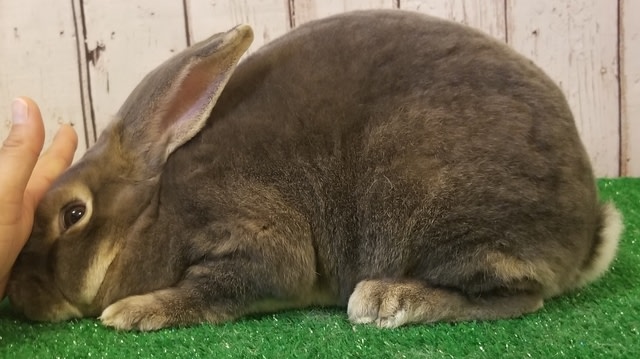
My three children (ages 7, 4, and 2) are involved in everything involving rabbits. My oldest son likes to talk to me about breeder combinations and dream about possible colors from the matches. All of my children like helping me feed and water them, and since we have so many rabbits now they are really a great help to me! Of course they enjoy holding the babies, and they are usually in the general area when I’m processing growouts. My children understand that many of our rabbits are used for food. I tell them that we enjoyed the rabbit’s life and we are thankful to God and the rabbit for feeding us.
Indoor pet rabbits can be litter box trained fairly easily after you figure out the spot they like to use for their bathroom. Rabbits like to chew so rooms should be “baby-proofed” if they are allowed to roam freely. Rabbits enjoy plastic baby rattles, wooden bead toys, cardboard boxes and tubes, pinecones, and lengths of untreated boards for chewing. My kids and I use the empty feed sacks to collect pinecones from our woods a few times a month.
Lots of people have rabbits so they are very easy to find and get started raising your own. Some will have better growth rates and dispositions than others, so expect to get what you pay for or put effort into. My biggest buck is 9.25 pounds. My friendliest and favorite doe has an 80% success rate. Rabbits only have 8 teats, but she has raised 11 kits without fostering them to other mothers. I’ve made mistakes buying rabbits and learned a few things to stay away are blind or bad eyes (they can be too nervous since they don’t see well), crooked teeth, or legs that do not line up straight under the body. Pedigrees aren’t necessary for having a successful herd but can be helpful in knowing possible future colors and assurance of good stock. Having a good rabbit mentor is useful for fielding questions and is also someone to enjoy the endless conversations about rabbits when you wear out the regular people!
Besides selling and eating rabbits I’ve tried tanning hides. I had a dream of making a quilt for my bed and couch pillows out of hides from my rabbits so I bought a starter kit from a fur-trading magazine that really was easy to use, but winding up with beautiful hides is more work and time than I’m willing to dedicate right now. I’ve made a hat for my daughter and sold some hides that I tanned but haven’t tanned enough to make my crafty dreams a reality
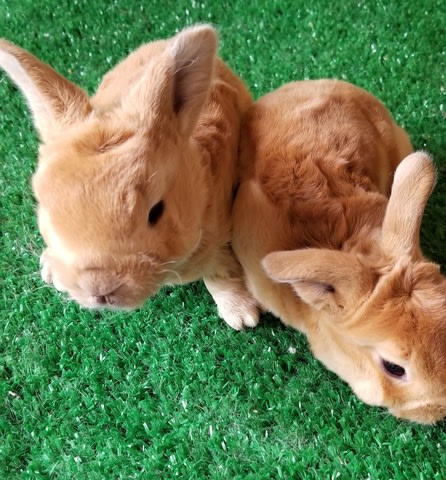
My favorite part of raising rabbits is the record keeping and genealogy through pedigrees. The turnaround time is much faster than with larger livestock and changes for raising bigger, better animals can happen more quickly. I enjoy inventing names for my breeders (first name- country, last name-gemstone) that I can view for generations through my records.
The longer I raise rabbits the less rabbits we eat though. I started out raising mixed breed rabbits for meat for my family, but now I mostly raise pedigree Rex rabbits to sell as pets and breeding stock, 4-H projects, and food for dog and exotic cat breeders.
My little farm is in Demopolis in Marengo County. I post pictures and micro-stories about our life and animals every few days on the farm’s Facebook page HardlySimpleFarming. I'm not an expert in rabbits, but I will be glad to help you any way I can in getting started.
